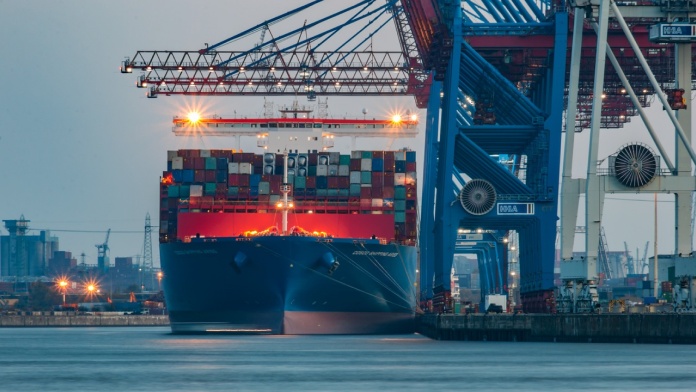FOB Shipping Point vs FOB Destination Point? Essential Points Of Difference

FOB shipping point vs FOB destination point often becomes a matter of confusion between many people and supply chain providers. You should be well aware of the reality before you use it.
Free On Board shipping point states that the buyer takes onus for the loss or damage of goods. Once the goods are away from the shipper. However, you need to understand it before getting an insight of the entire concept.
Free On Board Destination means that the seller retains the liability for the loss of damage. Unless the goods delivery process is initiated to the buyer. These are the basic differences between the two concepts. FOB vs CIF will also offer you some clear insights into it.
Difference Between FOB Shipping Point vs FOB Destination Point

There are several points of difference between the FOB shipping point and the FOB destination point. You need to go in-depth to have a better insight into it. Avoid making your opinion and conclusion depending on inaccurate information.
Both parties need to clearly define their responsibilities regarding documentation. It can include bills of lading to ensure a smooth and efficient transfer of ownership and control.
1. Ownership & Responsibility: FOB Shipping Point vs FOB Destination Point
In FOB Shipping Point, the buyer assumes responsibility and ownership for goods as soon as they are loaded onto carrier. They are usually a truck or a vessel at the seller’s shipping point. FOB shipping point vs FOB destination point has this core point of difference.
In FOB Destination Point, the seller has ownership and responsibility for the goods until they reach the buyer’s specified destination. It is essential that you know the facts well while attaining your needs with ease.
This is one of the crucial points of differences between the FOB shipping point vs FOB destination point. You need to identify the perfect solution that can make things easier for you in attaining your requirements.
2. Loss Or Damage Responsibility: FOB Shipping Point vs FOB Destination
The buyer is responsible for the shipping costs, insurance, and any potential damage or loss that may occur during transit from the seller’s location to the destination. The onus will stand still with the buyer.
The seller is responsible for the shipping costs, insurance, and any potential damage or loss that may occur during transit from the seller’s location to the buyer’s specified destination. FOB shipping point vs FOB destination point has some differences in terms of their damage of property.
3. Accounting Entry
The accounting entry for the seller is typically recorded as a sale once the goods are loaded onto the carrier at the shipping point. You should get through the complete concept to need a correct idea of it. FOB shipping point vs FOB destination also has differences in terms of their accounting entry. The type of consignment you use matters a lot here.
The accounting entry for the seller is usually recorded as a sale once the goods reach the buyer’s destination. You need to know the truth while attaining your requirements with complete ease. Once you develop the perfect solution, things can become easier for you in the long run.
4. Shipping Cost: FOB Shipping vs FOB Destination
FOB Shipping Point: The buyer is responsible for shipping costs from the seller’s location to the destination. You need to understand reality if you want to grow your business in the right order. Try to ensure that the shipping cost must be as low as possible.
FOB Destination Point: The seller until the goods reach the buyer’s specified destination. You need to know the truth while meeting your requirements with absolute ease.
5. Insurance
FOB Shipping Point: The buyer is typically responsible for obtaining insurance coverage for the goods during transit. Here, the onus of getting the insurance for the shipment lies with the buyer. The distribution channel here matters a lot.
FOB Destination Point: The seller is usually responsible for providing insurance coverage for the goods during transit. Try out the perfect solution that can make things easier for you in attaining your requirements simply.
6. Delivery Cost
FOB Shipping Point: The buyer has more control over the shipping process and can potentially receive the goods faster. The reason is the ownership transfers at the point of shipment. You need to get through the complete idea that can make situations easier for you to get your requirements with ease. Ensure that you make the proper arrangements of the delivery cost.
FOB Destination Point: The seller has more control over the shipping process, and the buyer might experience a longer delivery time. The reason is that ownership transfers at the point of destination. Although the responsibility of the seller keeps on moving with the places.
7. Revenue Recognition
FOB Shipping Point: The seller can recognize revenue once the goods are loaded onto the carrier at the shipping point. The point of seller recognition holds the key here. You must be well aware of it while meeting your needs.
FOB Destination Point: Revenue recognition may be delayed for the seller until the goods reach the buyer’s destination. Try to make things work in the correct order while attaining your needs with complete ease.
Final Take Away
Hence, these are some of the core points of difference between the FOB Shipping Point and FOB Destination point. You need to be well aware of it while attaining your requirements with absolute clarity.
You can share your views and points in our comment in our comment box. It will assist us to know your take on this matter. Once you follow the right methods, things can become simpler for you. It’s crucial for parties involved in a transaction to negotiate carefully and specify the FOB terms in the sales contract. To avoid misunderstandings and ensure that responsibilities and risks are clearly defined.
FOB shipping point vs FOB Destination Point has some core differences that you must go through with proper plans. Without a piece of proper knowledge, you cannot boost your business to the next level.
Need More Global Business News Please Click Below!!













